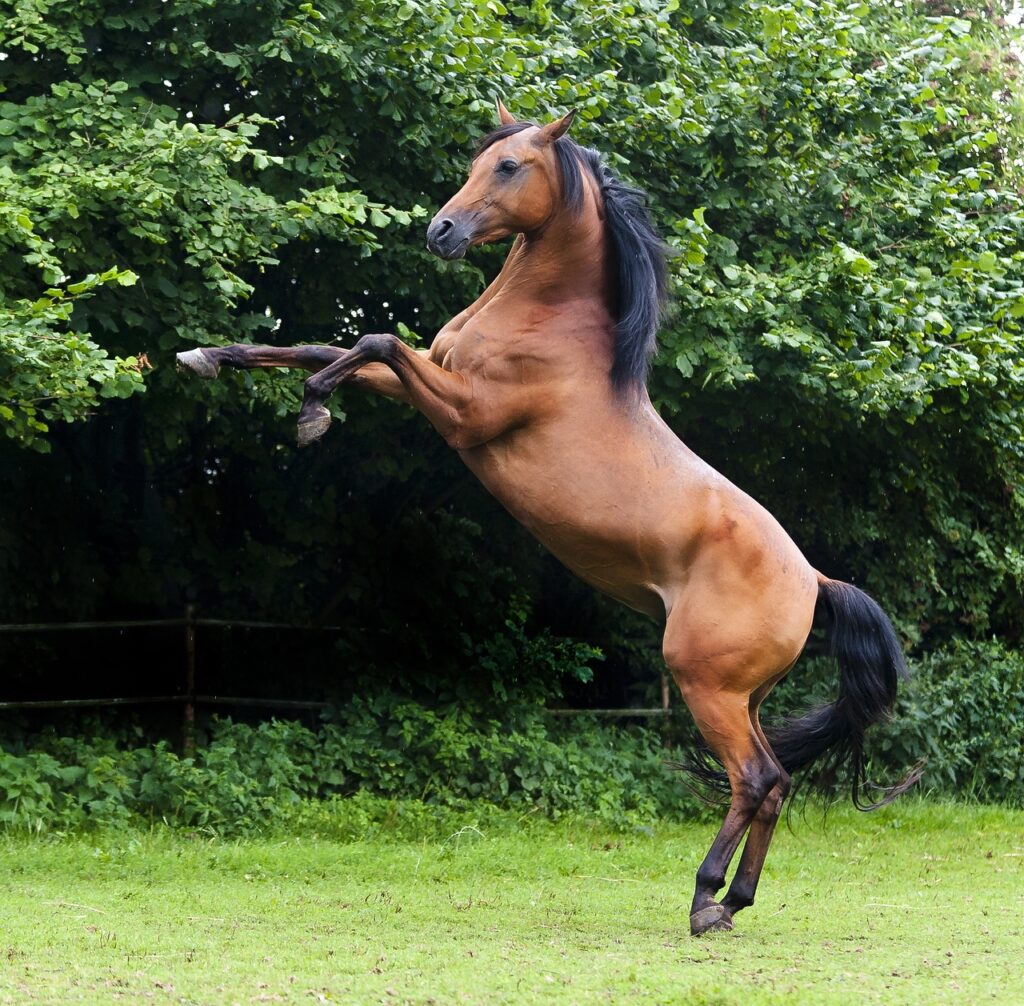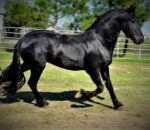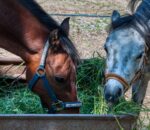It is very necessary to understand the breed of your horse and the accompanying specific breed characteristics. It helps to plan and practice good husbandry practices and assess the health of the horse. Breeds are a group of animals that share a common origin and some common distinguishing characteristics. More than 300 breeds of horses and ponies have been known till today. Different horse breeds are characterized depending upon their color, use, build, body size, and some other peculiar features. Broadly, horse breeds are categorized into four groups:
- Light Horses
- Draft Horses
- Feral Horses
- Ponies
Light horses have a height of about 14 to 17 hands and weigh under 1500 pounds. They are used for the purpose of riding, driving, and racing. Some breeds that include in this category are Arabians, Thoroughbred, Morgan, and Quarter horses.
(Note: 1hand = 4 inches)
Draft horses have a height that ranges from 14.5 to 17hands and sometimes even more than 17hands. They weigh more than 1500 pounds. Some breeds that include in this category are Percheron, Clydesdale, and Belgians.
Feral horses are the descendents of wild horses (wild breeds of horses). Some breeds that include in this category are Mustang or brumby, sorraia, and garrano.
Ponies have a height less than 14 hands and they have different sizes and temperaments. They are reared as a hobby and they are easy to keep. Connemaras, and Shetland ponies are the breeds of choice for adults and children, respectively. Fjord is the breed of ponies that is also considered as draft horse.
A few horses found throughout the world can be classified as foundation breeds because of their ancient origin and important contributions to the development of more recent breeds. Besides recognized breeds of horses, many specific types of horses have developed because of various environmental factors and the need for humans. Important breeds of horses are listed as under:
- Arabian
- Shire
- Hackney
- Andalusian
- British Ponies
- Barb
- Konik
- Cleveland Bay
- Trakehner
- Thoroughbred
- Ardennes
- Percheron
- Criollo
- Suffolk
- Turkmen
- Lipizzaner
- Kladruber
- Holstein
In addition, modern breeds of horses include:
- Spanish Barb
- The quarter horse
- The Pinto
- The Paint
- The Morgan
- The Haflinger
- The Galiceno
- The Clydesdale
- The Belgian
- The Peruvian Paso
- The Orlov Trotter
- The Knabstrup
- The Hackney Pony
- The Chickasaw
- The Bashkir Curly
- The Albino
- The Buckskin
- The Appaloosa
- The palomino
- The Nonius
- The Pony of America
- Spotted horse
- The American saddle horse
- The Hanoverian
- The Gotland
- The Fjord
Arabian Horse
Arabian horses of quite diversified types can be found throughout the world. The people of many countries, outside Arabia, have bred their own distinct type of Arabian horse for years. Such Arabian horses have been bred extensively in England, Egypt, Poland, the United States, Spain, Germany, and also elsewhere.
The Arabian horse is characterized by its distinctive head. The bulging forehead and concave face give a dished appearance. The eyes are large and set low in the head. A slight bulge at the back of the head and light muzzle give the head a wedge shape appearance. The back is short, straight, and leveled at the hip. The short back usually reflects a missing thoracic vertebra rather than a missing lumbar vertebra.
The Arabian horse has contributed to the development of every warm-blooded breed of horse and has even been crossed with the ancient Barb and Turk hoses to give our modern Barb and Turkmen breeds.

Thoroughbred Horse
During the 16th century, the Englishes were avid horse breeders, and the sport of horse racing developed among them. At his time, the English ponies were being crossed with the Arabian and Barb horses. This crossing increased the size and speed of the Engish horses and brought about a new type.
Two hundred years of intensive breeding of thoroughbreds has concentrated the hot blood and developed thoroughbred horses to a very prepotent breed. Thoroughbred crosses have been used to refine many other breeds. The Cleveland Bay, as we have seen although developed from cold-blooded horses, is now classified by some authorities as a warm-blooded breed due to extensive crossing with the thoroughbred.
Barb Horse
The native country of the barb is northern Africa. This horse has its name from the barbary states, now Ethiopia, Somaliland, and other parts of North Africa. The Libyan barb contains a strong mixture of Arabian blood, various local strains, and other mixtures as well.
To learn about principles of horse feeding, Click Here.


